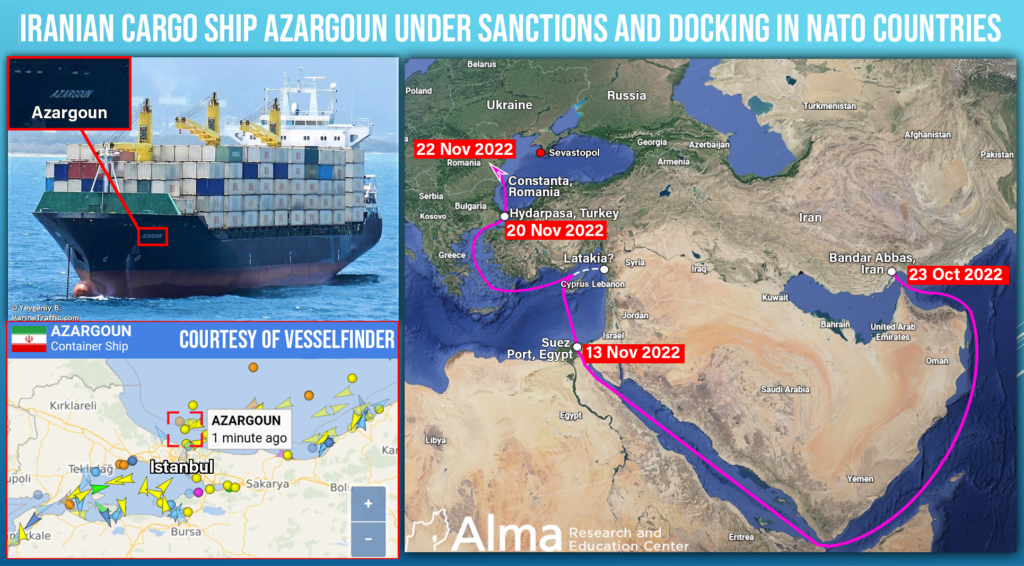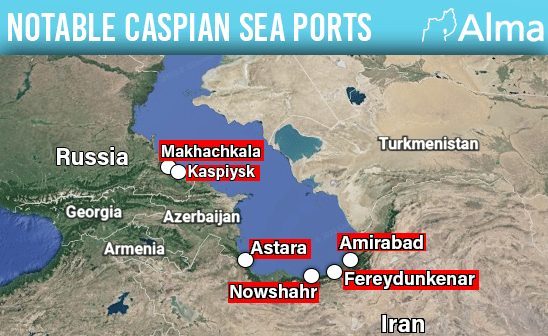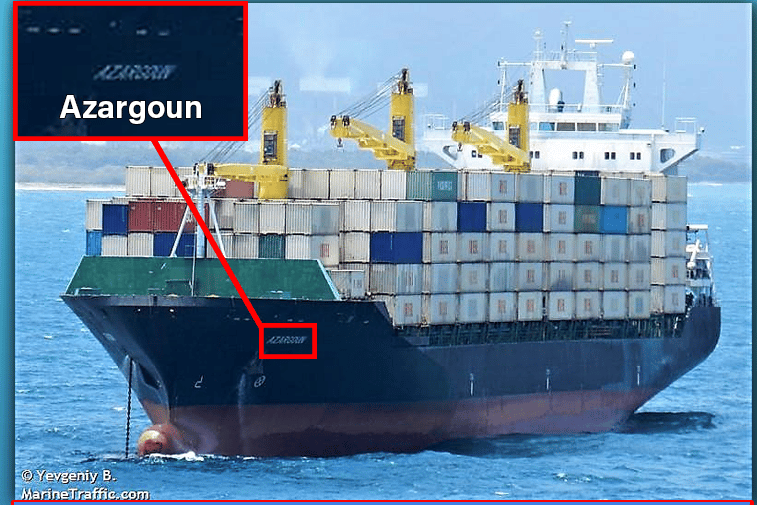We have recently been monitoring the Iranian cargo vessel “Azargoun.” The “Azargoun” is a container ship that began its service in 2003, sailing under the Iranian flag. Its vessel registration identification number is 9283019. Its cargo capacity is 2478 TEU (Twenty-foot Equivalent Unit). Its total length is 207.3 meters, and its width is 29.8 meters. Under the Iranian flag, similar cargo ships are Artabaz, Artenos, and Arzin.
Did the Iranian cargo ship “Azargoun,” which is under US Treasury Department sanctions, carry military cargo from Iran to Syria? Why do the two NATO member states (Turkey and Romania) allow an Iranian vessel under US sanctions to dock in their ports? Can the “Azargoun” be a potential platform for transferring military equipment to Russia? This is in respect to the information regarding the intention to transfer key components from Iran to Russia, enabling the assembly of the Shahad 136 UAVs and ballistic missiles on Russian soil.
The “Azargoun” departed Iran-Bandar Abbas port on October 23, passing through the Suez Canal into the Mediterranean Sea on November 13.
At this stage, it is unclear whether the “Azargoun” docked in Syria, in the port of Latakia, and whether it brought weapons to Syria (approximate date – November 17).
The “Azargoun” sailed the route towards Turkey (a NATO member country), and on November 20, it docked in Port of Hydarpasa, Turkey.
On 21 November, the “Azargoun” left the port of Hydarpasa and made its way towards Istanbul and from there entered the Black Sea towards Romania.
On November 22, the “Azargoun” docked in the port of Constanta, Romania (also a NATO member state). On November 23 at 0500 (local time), the “Azargoun” left Romania. On November 23 until 1700, we couldn’t identify the updated location of the “Azargoun.” It should be noted that the distance from the port of Constanta to the port of Sevastopol in Crimea is about 400 km (about 220 nautical miles, which at an average speed of a ship of this type, can be passed in 11 hours).
On November 23 at 1700, we managed to locate the “Azargoun” sailing toward the exit of the Black Sea towards Istanbul. As of this report, the “Azargoun” is still in the Black Sea. The “Azargoun” is formally on its way to Valencia, Spain (also a NATO member state). The “Azargoun” is expected to arrive in Spain on November 28 at 1400 (local time).

We understand that the “Azargoun” on its current voyage did not carry military equipment for Russia. However, it is possible that it transferred such equipment to Syria As part of the maritime corridor and under civilian cover. It cannot be ruled out that the Iranians, through the “Azargoun,” are exploring an up-to-date potential shipping route in anticipation of their intentions to transfer military equipment, in general, and the specific military equipment mentioned above in particular, to Russia via ship (and not only aircraft). This is how the Iranians hide their actions within the framework of civilian trade.
It should be noted that there are other potential routes for transferring Iranian equipment to Russia via the Caspian Sea. The Iranians have four potential ports on the coast of the Caspian Sea (Amirabad, Fereyduhkener, Nowshahr, and Astara). The Russians have one main civilian potential seaport– Makhachkala and another military port in Kaspiysk. At this stage, we do not know whether it is feasible to transfer equipment via the Caspian Sea in terms of infrastructure and transportation.

As for the docking of the Iranian ship in the ports of NATO member countries (Turkey, Romania, and later Spain), even if it is debatable that despite the American sanctions, docking is possible, the obvious question is, isn’t it time for Western countries in general and NATO member countries, in particular, to ban Iranian ships from docking in their ports and to re-examine the volume of their trade with Iran?






